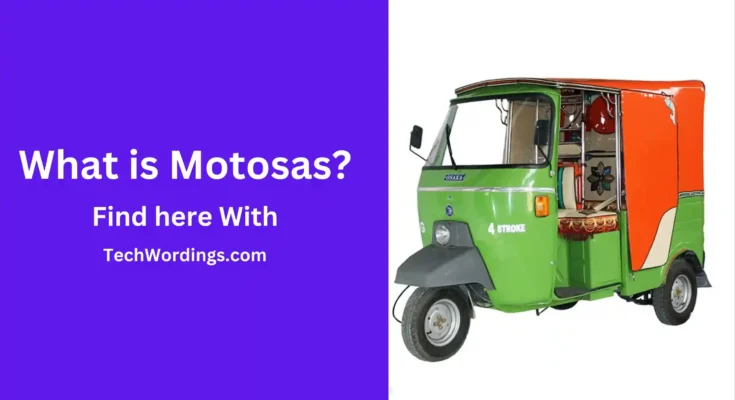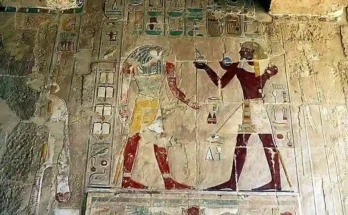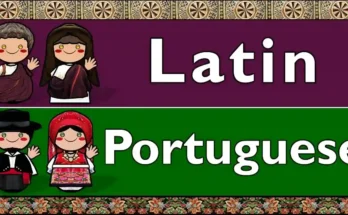In the bustling streets of diverse cities worldwide, a unique and vibrant mode of transportation captures the essence of local culture and efficiency—the motosa. Often recognized by different names such as auto rickshaws, tuk-tuks, or bajajs, these three-wheeled wonders play a crucial role in providing accessible and affordable mobility, particularly in congested urban areas. As we embark on the journey of decoding the charm of motosas, we’ll explore their global presence, distinctive variations, and the cultural significance that makes them more than just a means of transportation.
The ubiquity of motosas spans continents, each region boasting its style and features. From the iconic Bajaj Autorickshaw in India to the colorful and open-air Tuk-tuks of Thailand, these vehicles weave themselves into the fabric of daily life. As we delve into the myriad forms of motosas found across South Asia, Southeast Asia, Africa, and Latin America, a fascinating tapestry of transportation unfolds, showcasing the ingenuity and adaptability of local communities.
Join us on this exploration as we decipher the unique charm that motosas bring to the streets and alleyways of cities worldwide, offering not only a mode of conveyance but a cultural symbol deeply embedded in the identity of the places they traverse.
What is Motosas?
Motosas, a term encompassing various forms of motorcycle taxis such as auto rickshaws, tuk-tuks, or bajajs, are a ubiquitous mode of transportation found across the globe. These three-wheeled vehicles play a vital role in providing accessible and affordable mobility, particularly in densely populated urban areas. The term “motosas” is used to collectively refer to these versatile and often colorful vehicles that navigate through the intricate tapestry of city streets.
As we explore the world of motosas, it’s essential to recognize their diverse names and forms, depending on the region. In South Asia, they may be known as auto rickshaws, with the iconic Bajaj Autorickshaw being a familiar sight in India. In Southeast Asia, especially Thailand, the term “tuk-tuk” is popular, representing brightly colored, open-air taxis with bench seating. In Africa, they take on names like bodabodas in Uganda or boda-bodas in Kenya, serving not only as a mode of personal transport but also for deliveries. Latin America embraces mototaxis in Mexico and motoconchos in the Dominican Republic, reflecting the dynamic and varied nature of these vehicles.
Beyond their practical function, motosas hold cultural significance in many societies. They symbolize more than just transportation; they embody the spirit of innovation, providing employment opportunities for drivers and mechanics. Additionally, motosas often serve as mobile vendors, with street food sellers using them as a platform to offer snacks and drinks to passersby.
As we embark on the journey of decoding the charm of motosas, we will explore their global variations, unique features, and the challenges they face in an ever-evolving transportation landscape. These vehicles, deeply woven into the fabric of daily life, continue to adapt and innovate, ensuring their place as essential and vibrant components of transportation in cities around the world.
Global Variations of Motosas
Motosas, known by various names such as auto rickshaws, tuk-tuks, or bajajs, exhibit a fascinating array of styles and features across different regions of the world. Let’s embark on a journey to explore the diverse global variations of these three-wheeled wonders.
1. South Asia:
Pakistan: Bajaj Autorickshaw
- Iconic three-wheeled vehicle with open sides.
- A familiar sight on the bustling streets, providing affordable and efficient transportation in congested areas.
- Symbolizes the vibrancy of Indian urban life.
India, Bangladesh, Nepal, Sri Lanka:
- Local variations reflect unique design elements and adaptations to local needs.
- Integral to the daily commute and local commerce.
2. Southeast Asia:
Thailand: Tuk-tuk
- Brightly colored, open-air taxis with bench seating.
- A popular mode of transport for both locals and tourists, adding a touch of flair to the streets.
- Often adorned with decorations and personalized by drivers.
Cambodia, Vietnam, Philippines:
- Local adaptations like the “remork” in Cambodia, a motorcycle with a sidecar for passengers.
- Reflects the resourcefulness of communities in meeting transportation needs.
3. Africa:
Kenya, Tanzania, Uganda:
- Known as “bodabodas” or “boda-bodas.”
- Integral to personal transport and used for deliveries, showcasing versatility.
- Plays a crucial role in connecting communities in urban and rural areas.
South Africa:
- Various adaptations cater to different urban and suburban environments.
- Provides an affordable and convenient option for short-distance travel.
4. Latin America:
Mexico: Bajaj City Taxi
- Enclosed and modernized version of the auto-rickshaw.
- Blends efficiency with contemporary design, meeting urban transport demands.
Peru, Dominican Republic, Haiti:
- Widely used as “moto taxis,” serving as a vital part of the public transportation network.
- Reflects the adaptability of motosas to different landscapes and urban structures.
These global variations of motosas showcase not only their functional diversity but also the cultural richness of the regions they traverse. From the vibrant streets of India to the colorful markets of Thailand and the bustling urban centers in Africa and Latin America, motosas embody the spirit of innovation, adaptability, and community that defines the world of transportation across borders.
Unique Styles and Features of Motosas
Motosas, the dynamic and versatile motorcycle taxis found across the globe, showcase an intriguing array of styles and features that reflect the diverse needs and preferences of their respective regions. Let’s delve into the unique characteristics that make each type of motosa stand out.
1. Pakistan: Bajaj Autorickshaw
- Iconic three-wheeled vehicle with open sides.
- Recognizable by its compact design and efficient maneuverability in congested traffic.
- Symbolizes an integral part of the urban landscape, offering both individual and shared rides.
2. Thailand: Tuk-tuk
- Distinctively colorful, open-air taxis with bench seating.
- Adorned with decorations, each tuk-tuk reflects the personality and creativity of its driver.
- A popular choice for short-distance travel, providing a lively and adventurous experience.
3. Cambodia: Remork
- Motorcycle with a sidecar for passengers, known as the “remork.”
- Offers a unique combination of motorcycle agility and additional seating capacity.
- Often used for both personal transport and as a means of income for entrepreneurial drivers.
4. Mexico: Bajaj City Taxi
- Enclosed and modernized version of the traditional auto rickshaw.
- Blends functionality with a contemporary design, protecting from the elements.
- Commonly seen in urban settings, offering a comfortable and secure mode of transportation.
5. Peru: Mototaxis
- Widely used as “mototaxis,” with a compact design for navigating narrow streets.
- Often adorned with vibrant colors and creative decorations.
- Essential for connecting communities and serving as a primary mode of public transportation.
6. Kenya: Bodabodas
- Motorcycle taxis are known as “bodabodas” in Kenya.
- Renowned for their agility in navigating through traffic and providing quick point-to-point transport.
- An essential part of the local transportation network, serving urban and rural areas alike.
These unique styles and features of motosas not only fulfill practical transportation needs but also contribute to the cultural vibrancy of the regions they serve. From the bustling streets of India to the lively markets of Thailand and the dynamic urban landscapes of Latin America and Africa, motosas continue to evolve, adapting to the diverse environments and needs of their communities. Each type carries a distinct charm, embodying the spirit of innovation and resourcefulness in the world of motorcycle taxis.
Cultural Significance of Motosas
Motosas, beyond being a mode of transportation, hold profound cultural significance in the countries and communities where they thrive. As we explore their impact, it becomes evident that these motorcycle taxis are more than just vehicles; they are integral to the social fabric, symbolizing various aspects of daily life.
1. Symbol of Transportation:
- Affordable Mobility: Motosas provide a cost-effective and accessible means of transportation, particularly in congested urban areas. They serve as a lifeline for individuals who rely on them for their daily commutes, offering an alternative to traditional modes of transport.
- Efficiency in Congestion: Their nimble design allows them to navigate through traffic with relative ease, making them indispensable in crowded cityscapes where larger vehicles might struggle.
2. Local Livelihood:
- Employment Opportunities: Motosas offer not only transportation services but also employment opportunities for drivers and mechanics. This creates a network of livelihoods, supporting local economies and fostering entrepreneurship within communities.
- Entrepreneurial Spirit: Many motosa drivers take pride in personalizing their vehicles, decorating them with vibrant colors and unique features. This showcases an entrepreneurial spirit and a sense of ownership, turning each motosa into a mobile work of art.
3. Street Food Icon:
- Mobile Vendors: Motosas often double as mobile food stalls, with vendors selling snacks and drinks from their vehicles. This practice not only contributes to the local economy but also adds a flavorful dimension to the streets, turning motosas into mobile hubs of culinary exploration.
- Community Gathering Points: These motos-based street food vendors become community gathering points, fostering social interactions and turning the streets into vibrant, communal spaces.
In essence, motosas are woven into the cultural tapestry of many countries, symbolizing not just a mode of transport, but a way of life. They represent resilience, adaptability, and the ability to find innovative solutions to transportation challenges. As they traverse the streets, they carry stories of daily life, connecting people and communities uniquely and tangibly.
Understanding the cultural significance of motosas allows us to appreciate their role beyond practical transportation, recognizing them as emblematic symbols of the communities they serve. From the bustling streets of Southeast Asia to the lively neighborhoods of Africa and Latin America, motosas are not just vehicles; they are cultural ambassadors, reflecting the diversity and vibrancy of the regions they call home.
Challenges and Future of Motosas
While motosas have become integral to the transportation landscape in many parts of the world, they are not without challenges. As we explore the obstacles they face and the potential avenues for future development, it becomes clear that the path forward involves addressing safety concerns, adapting to changing transportation trends and embracing innovations that align with sustainability.
Challenges of Motosas:
- Safety Concerns: Traffic Accidents: Motosas, due to their smaller size and open structure, are susceptible to accidents in traffic, posing risks to both drivers and passengers.
- Emissions: Traditional motosas, especially those with internal combustion engines, contribute to air pollution, impacting both the environment and the health of individuals in densely populated urban areas.
- Competition from Ride-Hailing Services: The rise of ride-hailing services, facilitated by mobile applications, poses a significant challenge to traditional motos operations. These services often offer a more convenient and predictable alternative for commuters.
Future Developments of Motosas:
- Electric and Hybrid Motosas: To address environmental concerns, the development and widespread adoption of electric and hybrid motosas are underway. These vehicles offer the potential to reduce both emissions and noise pollution, contributing to a more sustainable urban environment.
- Improved Safety Regulations: Implementation of stricter safety regulations, including mandatory driver training and regular vehicle inspections, can enhance the overall safety of motos operations. This would not only protect passengers but also contribute to a positive public perception of these vehicles.
- Integration of Technology: Embracing technology to enhance safety and efficiency, such as GPS navigation systems and digital payment options, can make motosas more competitive in the changing transportation landscape.
- Community Engagement and Advocacy: Engaging with local communities and advocating for the cultural and economic value of motosas can help garner support for their continued existence. This involves promoting the unique contributions these vehicles make to local economies and fostering a sense of pride among users and operators.
- Diversification of Services: Exploring additional services beyond transportation, such as package delivery or partnering with local businesses, can help Motosas diversify its offerings and remain relevant in an evolving market.
The future of motosas involves a delicate balance between preserving their cultural significance, addressing safety and environmental concerns, and adapting to the evolving landscape of urban transportation. Through a combination of technological innovation, regulatory measures, and community engagement, motosas can continue to play a vital role in providing affordable and accessible mobility while evolving to meet the challenges of the modern world.
Safety Considerations for Users While Using Motosas
Motosas, while providing convenient and accessible transportation, require users to be mindful of safety considerations. Whether navigating bustling urban streets or exploring scenic routes, passengers can enhance their safety by adhering to certain guidelines and being aware of potential risks. Here are key safety considerations for users when using motos as:
1. Traffic Regulations:
- Helmet Usage: In regions where helmet usage is mandated, passengers should always wear helmets. This is crucial for protecting against head injuries and ensuring compliance with traffic regulations.
- Seat Belts (if available): If the motosa is equipped with seat belts, passengers should use them to enhance their safety during the journey.
2. Choosing Reputable Operators:
- Selecting Licensed Drivers: Users should choose motosa operators who are licensed and authorized to provide transportation services. This ensures that the driver has undergone the necessary training and adheres to safety standards.
- Well-Maintained Vehicles: Opt for motosas that appear well-maintained. Regular vehicle maintenance contributes to a safer and smoother ride.
3. Negotiating Fares:
- Agreeing on Fares in Advance: Before the journey begins, passengers should negotiate and agree upon the fare with the Motosas driver. This helps prevent disputes at the end of the ride.
4. Being Aware of Surroundings:
- Vigilance During the Ride: Passengers should remain alert to their surroundings throughout the journey. This includes being aware of traffic, potential hazards, and the behavior of other road users.
- Avoiding Distractions: Refrain from distractions, such as using mobile phones excessively, to maintain focus on the journey.
5. Comfort and Balance:
- Balancing Act: Passengers should strive to maintain balance while on the motosas, especially during turns or when navigating uneven terrain. Holding onto handles or designated handholds can enhance stability.
- Comfortable Seating: Ensuring that seating arrangements are comfortable and secure contributes to a safer and more enjoyable experience.
6. Communication with the Driver:
- Clear Communication: Passengers should communicate clearly with the motosas driver regarding the destination, preferred route, or any concerns they may have during the journey.
- Emergency Procedures: Familiarize yourself with emergency procedures and communication with the driver in case of unforeseen circumstances.
7. Respect Local Customs:
- Cultural Considerations: In some regions, there may be specific cultural norms or expectations when using motosas. Respecting these customs enhances the overall safety and positive experience.
By prioritizing these safety considerations, passengers can contribute to a secure and enjoyable motosas experience. Remember that safety is a shared responsibility, involving both users and operators working together to create a safer transportation environment.
Conclusion
In decoding the charm of motosas, we have embarked on a global journey, exploring the intricate dance of these three-wheeled wonders through the bustling streets of cities worldwide. From the iconic Bajaj Autorickshaw in the labyrinthine lanes of India to the vibrant tuk-tuks of Thailand, each motosa tells a story—a story of cultural richness, innovation, and adaptability.
As we unveiled the diverse global variations and unique features, it became clear that motosas are not just vehicles; they are cultural symbols deeply interwoven into the fabric of daily life. From providing affordable and accessible mobility to becoming street food icons and offering employment opportunities, motosas are more than a means of transportation—they are community connectors.
However, the journey is not without challenges. Safety concerns, competition from ride-hailing services, and environmental impacts pose hurdles that demand attention. Yet, the future of motosas holds promise. The rise of electric and hybrid models, improved safety regulations, and the integration of technology pave the way for a more sustainable and secure transportation landscape.
In concluding our exploration, we recognize that motosas represent more than just a snapshot of the present; they are a dynamic force riding into the future. With their adaptability, cultural significance, and ongoing efforts to address challenges, motosas continue to charm and innovate, ensuring their place as indispensable contributors to the vibrant tapestry of global transportation.
So, whether you find yourself navigating the bustling streets of Delhi in a Bajaj Autorickshaw, exploring the colorful markets of Bangkok in a tuk-tuk, or winding through the vibrant neighborhoods of Mexico City in a Bajaj City Taxi, remember that each motosa is a cultural ambassador, weaving stories of communities, resilience, and the ever-evolving spirit of urban life. As we decode the charm of motosas, we find not just a mode of transport but a timeless journey into the heart of diverse cultures and the road ahead.



